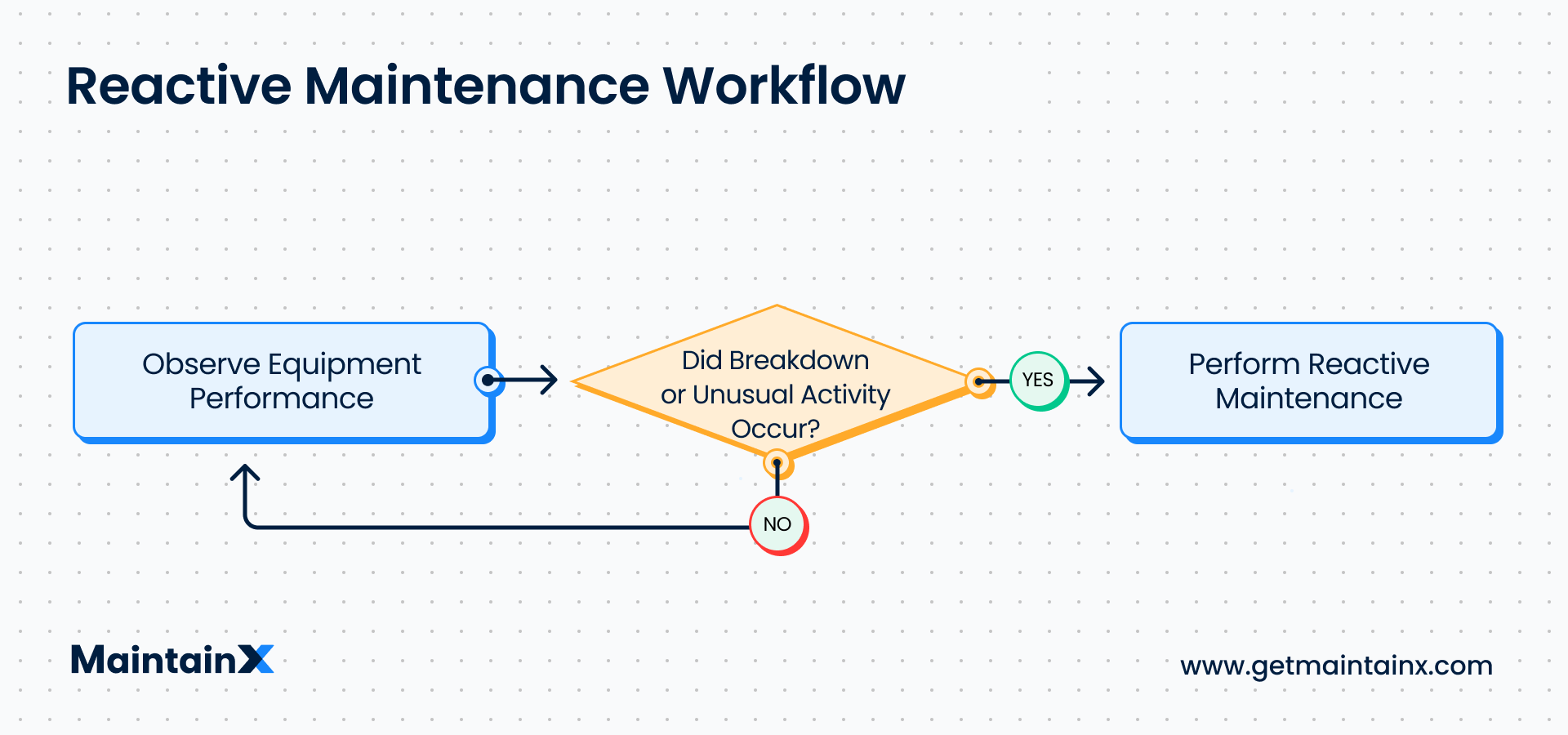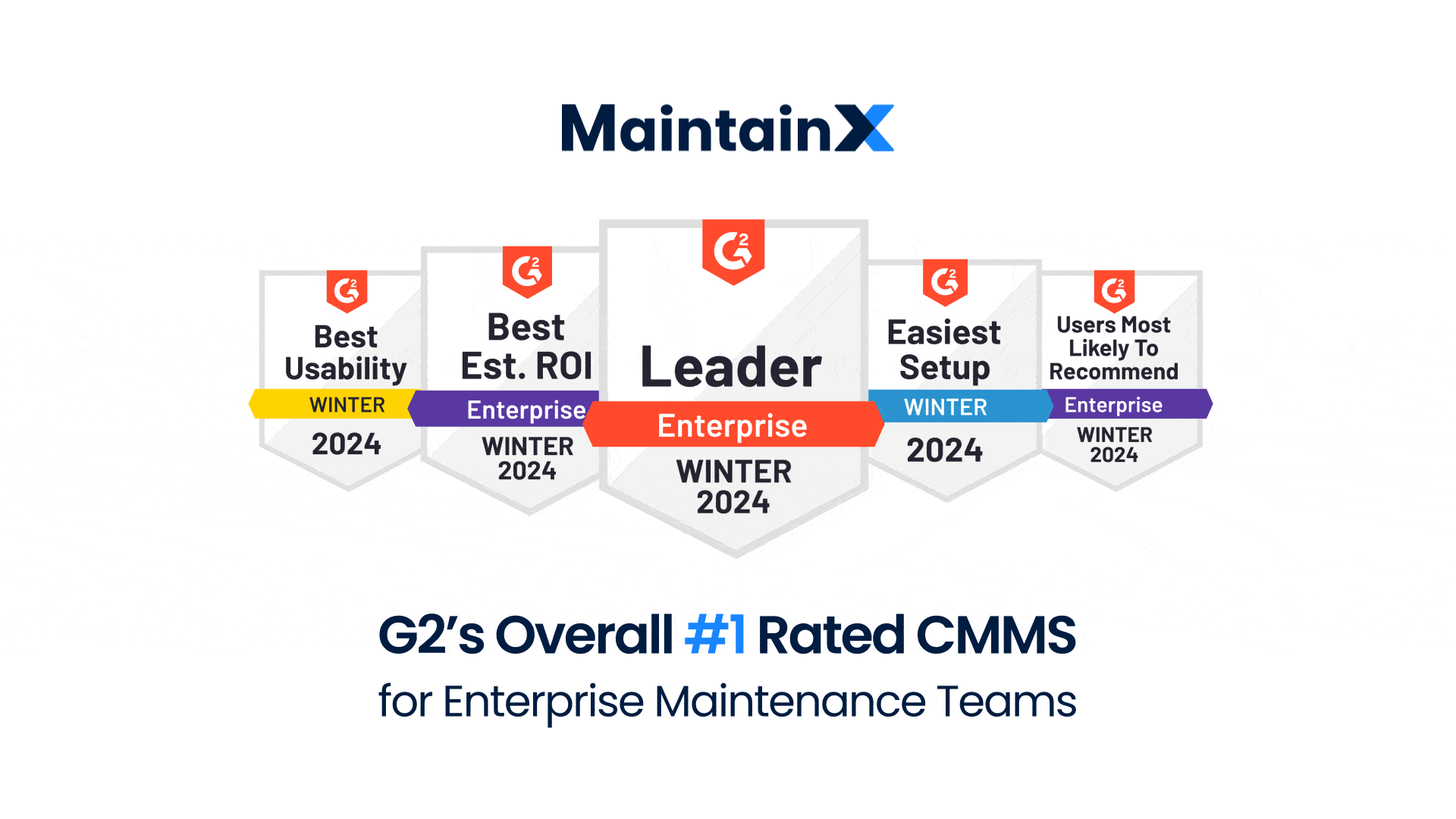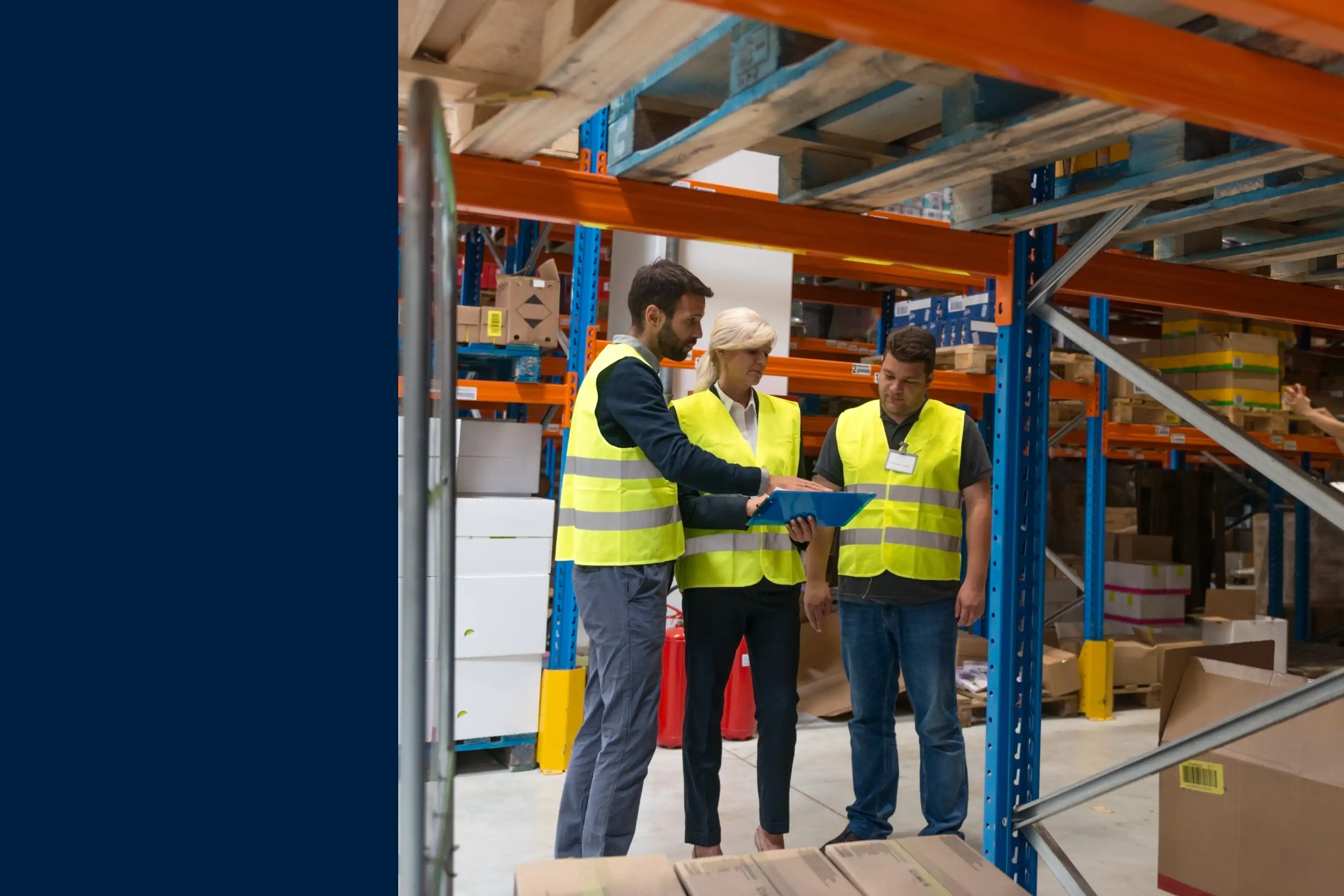
Industrial companies invest millions of dollars into equipment to run their businesses. If they aren’t running as much and as efficiently as possible, the return on this investment is dangerously low. That’s why most companies also invest in facilities preventive maintenance programs to maintain equipment and make sure they’re running as well as possible and for as long as possible. The less often you have to replace assets, the more capital your facility has to invest in hiring top talent, developing new products and services, and expanding operations in the future.
These programs help to make sure routine maintenance is completed on time and that there are few, if any, costly downtime expenses.
The number one reason for unscheduled downtime is aging equipment. The proven solution to prolonging facility asset longevity? Organized and realistic facilities preventive maintenance programs that save businesses as much as 12% to 18% in costs.
In this post, we'll cover everything strategic preventive maintenance delivers for your facility and the steps for implementing a successful preventive maintenance program.
Key takeaways
- Facilities preventive maintenance programs reduce overall maintenance costs by 12% to 18% by minimizing unplanned downtime and optimizing labor and parts usage.
- A successful preventive maintenance program starts with prioritizing maintenance on critical equipment that has the highest impact on operations and revenue.
- Transitioning from reactive to preventive maintenance requires a structured implementation plan, clear goals, and buy-in from your maintenance team.
- Using a computerized maintenance management system (CMMS) like MaintainX is essential for automating preventive maintenance scheduling, tracking work orders, and generating the data needed to measure return on investment (ROI) and drive continuous improvement.
What are facilities preventive maintenance programs?
Facilities preventive maintenance programs center around preventive maintenance (PM), or scheduled maintenance—a type of maintenance that's regularly performed on facility assets to minimize the likelihood of equipment failure.

Facilities preventive maintenance programs revolve around scheduling routine maintenance tasks to ensure the proper performance of equipment and extend asset lifespans. Depending on your facility type, PM tasks vary:
- Manufacturing plants: Example PMs might include lubricating conveyor bearings and replacing air filters on production equipment
- Food and beverage facilities: PM activities could include cleaning and sanitizing processing equipment or calibrating temperature sensors
- Logistics centers: Maintenance teams might complete service on forklift engines or inspect dock equipment as examples
- Oil and gas operations: Preventive maintenance tasks might include testing safety valves or inspecting pipeline integrity
Smart preventive maintenance checklists with regular inspections help maintenance teams stay on top of these activities.
The primary goals of preventive maintenance programs
Facilities preventive maintenance programs center around two primary goals:
- Reducing unnecessary downtime, which directly impacts production times, customer experience, margins, and expenses.
- Extending asset longevity so organizations don't have to make expensive new purchases sooner than necessary.
Facilities preventive maintenance programs revolve around recurring maintenance scheduling, often with help of facility management or work order software. Facility management assigns recurring service requests to technicians digitally, who then check equipment, perform regular maintenance, and make repairs as needed.
Unfortunately, a large number of facility management teams remain stuck in reactive maintenance mode for a variety of reasons, like being under-resourced or having a lack of planned maintenance time due to rigid production schedules.
Steps to implement a facilities preventive maintenance program
A successful preventive maintenance program is built around these three crucial elements:
- Reducing implementation time: Structure prevents common startup delays
- Ensuring buy-in: Clear goals help justify investment to executives
- Maximizing ROI: A prioritized approach focuses resources on high-impact assets
Focusing on these three pillars will allow you to see real improvements in uptime and cost savings. When combined with these seven steps, your organization can implement a world-class preventive maintenance program.
1. Define program goals and key performance indicators
Start by defining what you want to achieve. Your goals should be specific, measurable, and tied to business objectives. Common goals include reducing unplanned downtime by a certain percentage, lowering maintenance costs, or improving asset reliability.
Establish key performance indicators (KPIs) like mean time between failures (MTBF) and schedule compliance to track your progress.
2. Inventory and prioritize assets
You cannot maintain what you do not track. Create a comprehensive list of all maintainable assets in your facility. Once inventoried, prioritize them based on their criticality to your operations.
Focus first on assets whose failure would cause significant production loss, safety risks, or high repair costs.
3. Gather asset information
For each critical asset, collect all relevant information, including manufacturer-recommended maintenance schedules, operating manuals, and historical maintenance records. This data provides the foundation for creating your PM tasks and schedules.
4. Develop standardized preventive maintenance procedures
Create detailed, step-by-step checklists for each preventive maintenance task. Standardized procedures ensure that technicians perform work consistently and correctly, regardless of which technician receives the assignment.
Include safety guidelines, required tools and parts, and necessary steps in each checklist.
5. Set preventive maintenance schedules
Determine the frequency for each PM task. Base schedules on time (e.g., weekly, monthly), usage (e.g., every 1,000 operating hours), or condition (e.g., when a sensor reading crosses a threshold).
A CMMS automates this scheduling process to make sure no task is missed.
6. Assign and train your team
Clearly define roles and responsibilities within your maintenance team. Ensure you properly train technicians on the PM procedures for the assets they will service.
Fostering a proactive maintenance culture is key to long-term success.
7. Measure, analyze, and optimize
A PM program is not a set it and forget it initiative. Continuously track your KPIs to measure the program's effectiveness.
Analyze the data to identify trends, such as recurring failures or high-cost assets. Use these insights to improve your PM schedules, procedures, and resource allocation.
Reactive maintenance vs preventive maintenance

Reactive maintenance is the practice of waiting until equipment breaks down or witnesses complete failure to do maintenance or any corrective action. According to the Schneider Electric report, 55 percent of U.S. companies exclusively practice reactive maintenance—despite research showing proactive maintenance reduces costs by 12% to 18%.
Preventive maintenance is the practice of completing routine, scheduled inspections on equipment to identify potential signs of failure and take corrective action to avoid complete failure. It also involves executing routine maintenance tasks, such as lubrication on bearings, to keep assets in a good functioning state.
The true cost of waiting
Running equipment to failure is expensive. Exclusively practicing reactive maintenance isn't cost-effective because it results in unplanned expenses.
Facilities don't just lose money on malfunctioning equipment; they also waste funds on costs associated with lost productivity, overtime labor, and spare part/storage purchasing.
Effective preventive maintenance programs don't center around planning for every asset. A good rule of thumb for determining whether to perform preventive maintenance on a particular asset is asking yourself, would the associated costs of performing preventive maintenance be less than the cost of failure for this particular asset?
Top five benefits of facilities preventive maintenance plans
1. Reduced costs
The term downtime, or outage duration, describes the period of time when a system stops working as designed. An old air filter, door locks, a worn-out bearing, or any number of production part malfunctions cause downtime.
Here's what happens when manufacturing facilities operate without preventive maintenance plans:
- Production line stoppages: Unexpected equipment failures halt manufacturing, causing missed delivery deadlines
- Idle labor costs: Production workers wait on the clock while maintenance crews perform emergency repairs
- Emergency overtime expenses: Maintenance technicians work nights and weekends at premium rates
- Contractor dependency: Specialized repairs require expensive external service providers
- Expedited parts costs: Rush shipping fees for critical components exceed normal part costs by 300%.
Facility managers who practice preventive maintenance schedules mostly avoid these issues. Because there are very few emergency situations with preventive maintenance.
Maintenance teams schedule equipment shutdowns for time periods that won't impact worker productivity, customer service, or product output. The larger the organization, the higher the potential for cost savings via planned maintenance.

2. Decreased downtime
Downtime is one of the most critical metrics in maintenance management. Downtime occurs when a machine or asset is not operating.
According to one survey, unplanned downtime cost 46% of companies $50K per hour and 28% of companies $250K per hour, on average. Despite recent technological advancements, many facilities and manufacturers work with machinery that is more than 15 years old.
For this reason, parts often become unavailable or take weeks to deliver from overseas. Understanding equipment availability and consistently following suggested maintenance schedules means the difference between several hours and several weeks of unnecessary downtime.
Imagine if such an event happened during the holiday season. Unexpected downtime negatively impacts incoming revenue during your facility's highest production quarter of the year.
Additional risks that impact automation infrastructure are security, safety, and quality. You'll better equip your facilities by conducting an asset risk audit to determine potential asset problems and solutions.
3. Increased equipment efficiency
This principle applies directly to industrial equipment. A packaging line that receives regular lubrication and belt tension adjustments runs at optimal speed with minimal energy waste.
Without proper maintenance, friction increases, motors work harder, and throughput drops—requiring more energy to produce the same output.
4. Improved safety
Equipment running in subpar condition poses a risk to employees, vendors, and customers. Machine failure leads to hazards and safety concerns, like fires.
Unexpected failures present real workplace risks and liabilities. With this in mind, facilities preventive maintenance programs reduce on-the-job injuries and regulatory compliance penalties.
5. Increased reliability
Planned maintenance programs increase your brand's reputation for reliability. Most businesses can't afford to miss deadlines, disappoint customers, and generate negative online reviews.
Facilities operating provide more consistent customer experiences with PM plans. Facilities can also set more realistic purchase order timelines and foster stronger relationships with suppliers and clients alike.

Simplify facility management with preventive maintenance software
Does it feel like your facility maintenance team is always playing catch-up? If so, it's time to say goodbye to a purely corrective maintenance framework and embrace the benefits of preventive maintenance.
Creating a preventive maintenance plan transforms facility management operations.
If you're ready to streamline the work order process and enhance communication between workers, we recommend implementing a PM program with the support of work order and asset management software. Based on our experience, most facilities recoup their investment within the first year.
MaintainX is a mobile-first maintenance and asset management platform that lightens the load of facility management teams. The platform provides smartphone-accessible tools that technicians actually want to use, reducing training friction and improving adoption.
With automated PM scheduling, live data insights, and seamless enterprise resource planning (ERP) integrations, maintenance teams can transition from reactive to proactive maintenance strategies that provide measurable results.
The bottom line on facilities preventive maintenance programs
Switching from reactive to proactive maintenance pays off faster than almost any other operational change you can make. Organizations that start structured facilities preventive maintenance programs consistently achieve 12% to18% cost reductions while extending equipment life and improving safety.
MaintainX replaces outdated maintenance practices with tools designed for frontline teams. Our mobile-first platform gives frontline teams tools they actually want to use, reducing training time and improving adoption.
With automated PM scheduling and real-time asset insights, maintenance teams can focus on prevention instead of constantly responding to breakdowns. Ready to see how digital tools accelerate your PM program success? Sign Up for Free and start building a maintenance strategy that delivers measurable results.
Facilities Preventive Maintenance Programs FAQs
How long does it take for manufacturing facilities to see return on investment from preventive maintenance programs?
Most manufacturing facilities see positive ROI within six to12 months of starting a structured PM program. Initial savings come from reduced emergency repairs and decreased unplanned downtime, while long-term benefits include extended asset life and deferred capital expenditure.
What equipment should maintenance managers prioritize in preventive maintenance programs?
Focus first on production-critical assets, single points of failure, and high-value equipment where downtime directly impacts revenue. A maintenance manager should conduct a criticality analysis to identify which assets deliver the quickest ROI when maintained proactively.
How do plant managers measure the success of facilities preventive maintenance programs?
Key metrics include planned maintenance percentage (PMP), PM schedule compliance rates, and MTBF improvements. Many plant managers also track cost per unit produced and overall equipment effectiveness (OEE) to quantify program impact.
What implementation challenges do maintenance directors face with preventive maintenance programs?
Common challenges include technician resistance to new processes, budget constraints for proper tools, and difficulty collecting accurate asset data. Successful maintenance directors start with pilot programs on critical equipment to demonstrate value before scaling across all assets.
How do facilities preventive maintenance programs integrate with existing plant systems?
Modern CMMS platforms connect easily with ERP systems, inventory management, and building automation systems. This connectivity enables maintenance managers to connect PM activities with parts procurement, financial reporting, and operational dashboards for complete visibility.



.webp)



.webp)